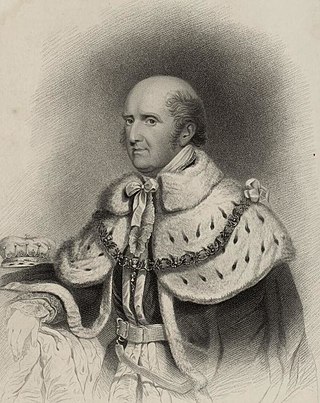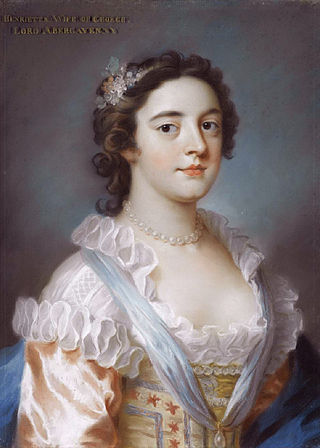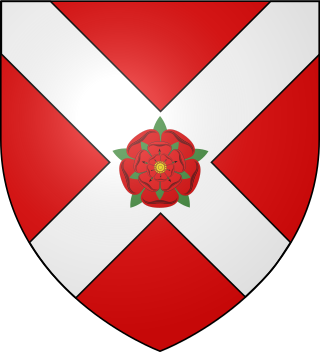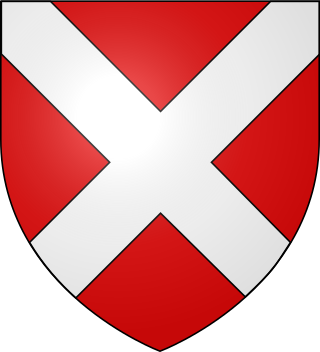Related Research Articles

Marquess of Abergavenny in the County of Monmouth, is a title in the Peerage of the United Kingdom created on 14 January 1876, along with the title Earl of Lewes, in the County of Sussex, for the 5th Earl of Abergavenny, a member of the Nevill family.

George Nevill, 5th Baron Bergavenny KG, PC, the family name often written Neville, was an English nobleman and courtier who held the office of Lord Warden of the Cinque Ports.
The title Baron Bergavenny was created several times in the Peerage of England and once in the Peerage of Great Britain, all but the first being baronies created by error. Abergavenny is a market town in South East Wales with a castle established by the Norman lord Hamelin de Balun c. 1087.

Henry Nevill, 2nd Earl of Abergavenny, KT was a British peer, styled Hon. Henry Nevill until 1784 and Viscount Nevill from 1784 to 1785.

George Nevill, 1st Earl of Abergavenny, known as Lord Bergavenny from 1744 to 1784, was an English peer. He married into a branch of the Pelham family seated at Stanmer and briefly held office as Lord Lieutenant of Sussex. Created an earl in 1784, he died the following year.
Edward Nevill, de facto 15th Baron Bergavenny was an English peer.
George Nevill, de facto 14th Baron Bergavenny was an English peer.
George Nevill, de facto 13th Baron Bergavenny was an English peer.
George Nevill, de facto 11th Baron Bergavenny was a de facto English peer.
John Nevill, de facto 10th Baron Bergavenny was an English peer.
Henry Nevill, de facto 9th Baron Bergavenny was an English iron founder, soldier and politician who sat in the House of Commons at various times between 1601 and 1622 when he inherited the Baron Bergavenny peerage.
Edward Nevill, de facto 8th Baron Bergavenny was an English peer.
Edward Nevill, de facto 7th Baron Bergavenny was a de facto English peer.
Henry Nevill, 6th and de jure 4th Baron Abergavenny KB was an English peer. He was the son of Sir George Nevill, 5th Baron Bergavenny, and Mary Stafford. He succeeded to the barony upon the death of his father, George Nevill, 5th Baron Bergavenny.

Edward Neville, de facto 3rd Baron Bergavenny was an English nobleman.
Frances Neville, Baroness Bergavenny (also Nevill was an English noblewoman and author. Little is known of either Lady or Lord Bergavenny, except that the latter was accused of behaving in a riotous and unclean manner by some Puritan commentators. Lady Bergavenny's work appeared in The Monument of Matrones in 1582 and was a series of "Praiers". Her devotions were sixty-seven prose prayers, one metrical prayer against vice, a long acrostic prayer on her daughter's name, and an acrostic prayer containing her own name.

The Neville or Nevill family is a noble house of early medieval origin, which was a leading force in English politics in the later Middle Ages. The family became one of the two major powers in northern England and played a central role in the Wars of the Roses along with their rival, the House of Percy.

Richard Bull (1721–1805) was an English landowner and politician who sat in the House of Commons from 1756 to 1780. He was a noted art collector who lived in a historic house on the Isle of Wight.

William Tatton (1659–1736) was a career soldier in the British Army who rose to the rank of Lieutenant-General.

Henrietta Nevill, Baroness Bergavenny, née Henrietta Pelham, was the wife of George Nevill, 1st Earl of Abergavenny.
References
- 1 2 3 4 5 6 7 Complete Peerage. Vol. 1 (2nd ed.). p. 40. Retrieved 29 May 2023.
- ↑ "Historic England" . Retrieved 29 May 2023. Entry relates to the current house and grounds.
- ↑ "Kidbrooke Park - East Grinstead". Parks and Gardens. Retrieved 31 May 2023.
- ↑ "Kidbrooke Park, Forest Row - 1000305 | Historic England". Historic England. Retrieved 31 May 2023.
- ↑ "An account of the tryal of Richard Lyddel, Esq., at His Majesty's Court of Common Pleas, before the Right Honourable Lord-Chief-Justice Eyre, for carrying on a criminal conversation with the late Lady Abergavenny, on Monday the 16th of February, 1729/30" . Retrieved 2 June 2023.